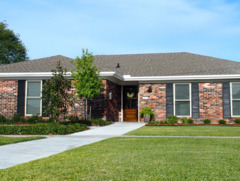The Care Quality Commission Inspects Residential Care Homes
The Care Quality Commission is a body that inspects health and social care services in England. They inspect residential care homes for a range of different issues, including staffing levels, fire safety and COVID-19. This body has published guidance for residential care homes to improve their services and make sure that they meet high standards of care. However, care homes can be expensive, and many people are unsure about where to turn for help.
Respiratory effects of COVID-19 in residential care homes
The study investigated the respiratory effects of COVID-19 among residents in residential care homes, a setting that is not typically associated with a higher incidence of COV. A total of 69 care homes reported COVID-19 outbreaks. Of these, 68 (61%) experienced a confirmed outbreak. Of these, ten care homes (four per cent) had no outbreaks. The study also identified a significant association between the number of beds and the occurrence of previous COVID-19 outbreaks.

The study found that the risk of a COVID-19 outbreak was higher in larger care homes but not in smaller ones. Although this virus can be passed from person to person, the risk was not significantly increased in homes with confirmed hospital discharges. Further analyses should focus on the chain of transmission in such settings. Some patients may have transferred COVID-19 from other health settings, which can seed outbreaks.
Integrated working between care home and NHS
Integration between care homes and the NHS should be assessed to understand its impact on older people. Research needs to consider the context of working between services and involve care homes and NHS staff in planning interventions. Older people are notorious for having multiple co-morbidities and cognitive impairments, which make integration challenging. Fortunately, there are many examples of integrated working that have been successful. This article explores the challenges and benefits of this model.
The survey found that integrated working between care homes and the NHS is a positive option for improving care. More than 60% of respondents said they had engaged in shared documents and learning with NHS colleagues. Nearly one-third of respondents had received payments from the NHS for particular services provided by their blocked drain medway. These included palliative care, rehabilitation and respite care. The survey also revealed that care homes were using integrated care plans and sharing information and knowledge with NHS staff.
Fire safety in residential care homes
Fire is one of the biggest hazards in any non-domestic building, and residential care homes are no exception. In fact, they have an even higher risk than ordinary buildings because their residents are vulnerable. A fire can cause serious damage, and evacuating them is extremely difficult. Because of this, it is crucial that care homes have the right fire protection measures in place to protect their residents. Listed below are some of the important aspects to consider when implementing fire safety measures in residential care homes.
An evacuation plan is essential, and care homes must carry out an accurate risk assessment to ensure they have everything in place in case of a fire. The evacuation plan should be detailed, as residents may not be able to escape unaided. In addition, specialist evacuation equipment may be required for non-ambulant residents. Once an evacuation plan is implemented, it must be documented in a log to prove that the care home has taken all necessary precautions.



